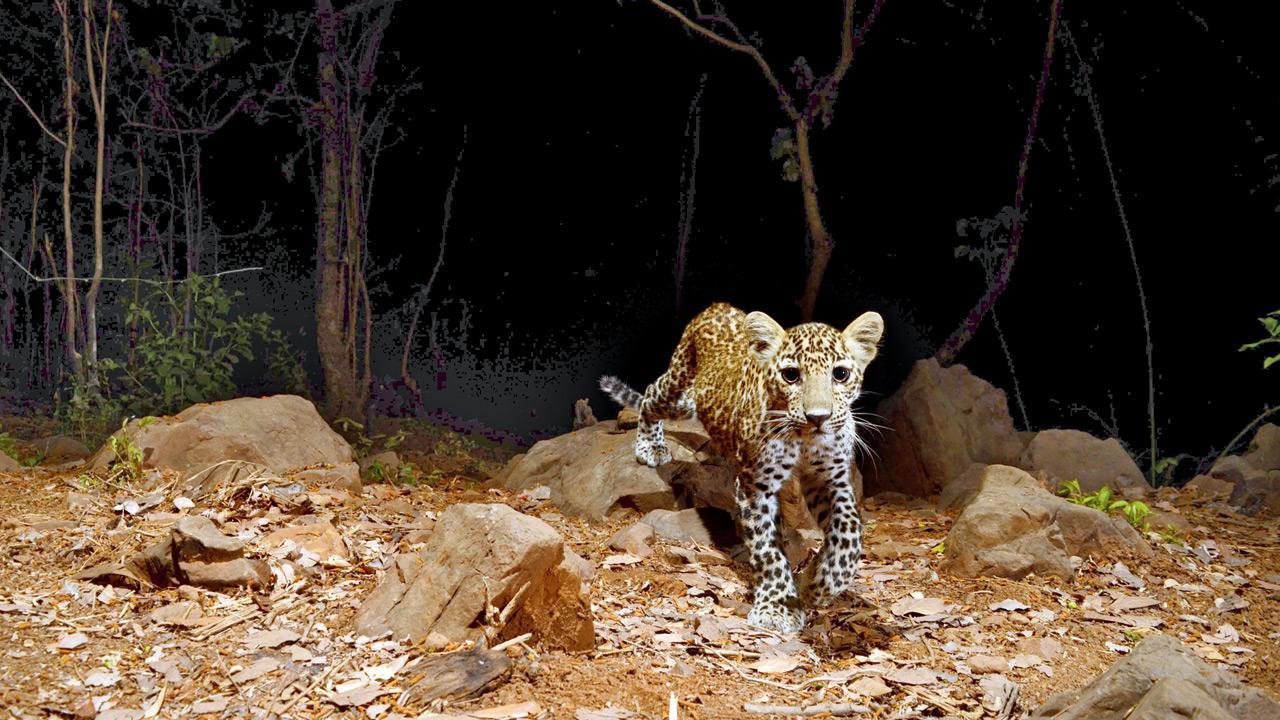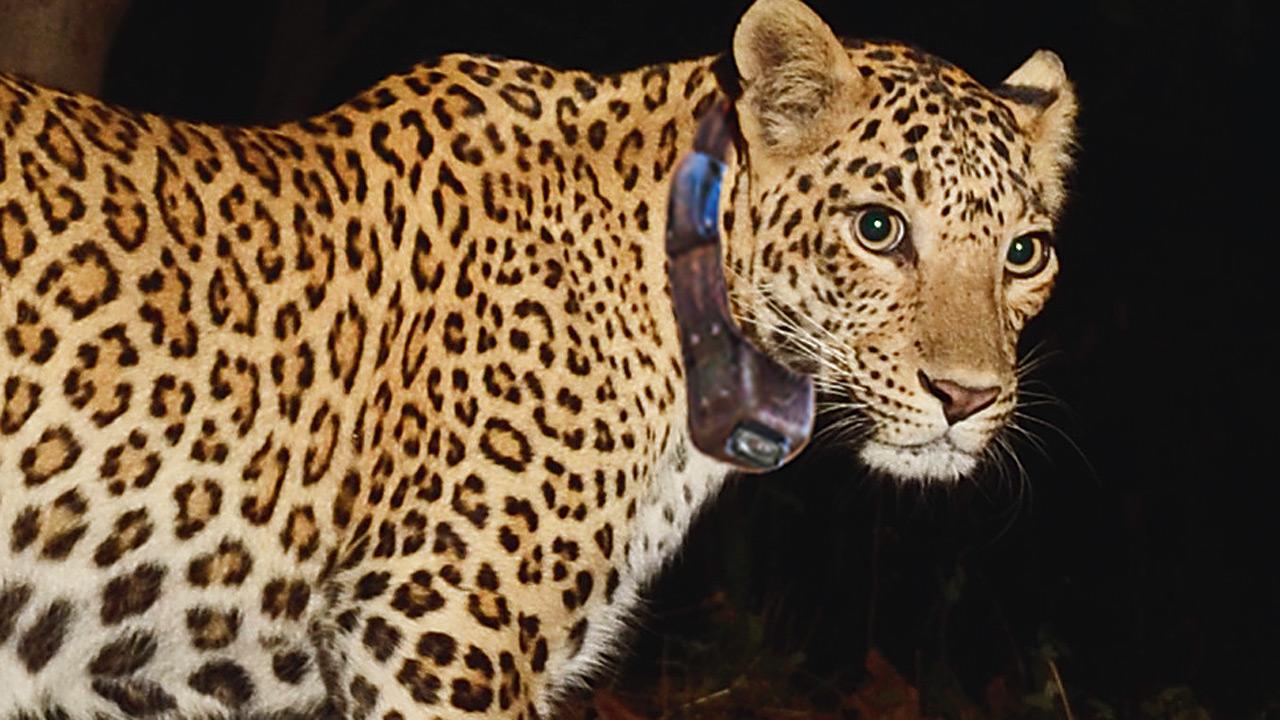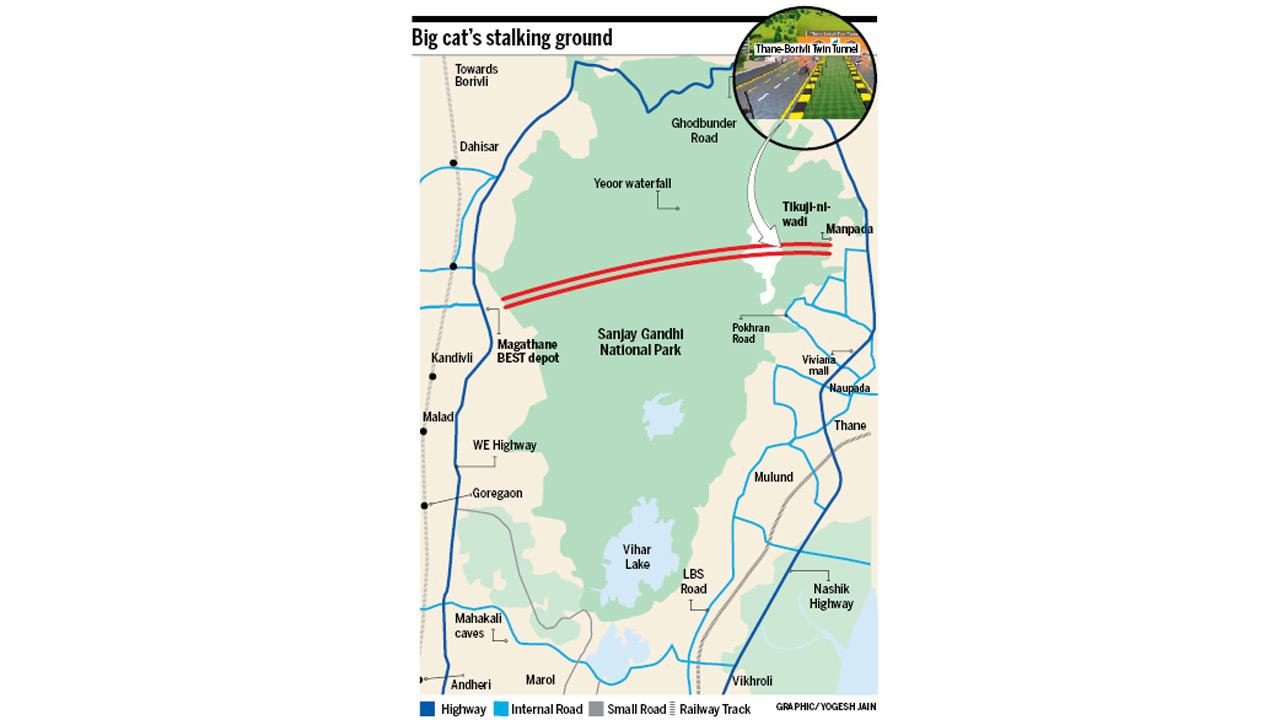In a first, new age radio collar fitted on big cat will give valuable info on impact of national park tunnel on wildlife; the collaring will be done by the Wildlife Institute of India (WII) as part of a project to study the impact of the Thane-Borivali underground tunnel that will pass beneath SGNP

This is the first time a leopard from SGNP will be fitted with a radio collar that has video recording capabilities. File pic
If all goes to plan, then in the coming months, for the first time a leopard from Mumbai’s Sanjay Gandhi National Park (SGNP) will be fitted with a radio collar equipped with a video camera that will tell Mumbaikars how the big cat navigates urban landscapes. The collaring will be done by the Wildlife Institute of India (WII) as part of a project to study the impact of the Thane-Borivli underground tunnel that will pass beneath SGNP.
Senior scientist Dr Bilal Habib from WII told mid-day that the preconstruction survey along the alignment of the tunnel project has already started. “We have started the preconstruction ground survey in SGNP for the Thane-Borivli underground tunnel project. We have given certain suggestions to the agency implementing the project that should be followed while starting the construction work near the entry and exit points,” said Dr Habib.

DR Habib also told mid-day that for the first time, a leopard from SGNP will be fitted with a radio-collar capable of recording video footage, through a high-definition camera fitted in the collar, which would shed light on the hidden world of urban leopards and how they navigate.
“We will be radio collaring leopards, spotted deer and sambar deer to study the pre and post impact of the tunnel construction activity on wildlife, if any, and one of the radio collars capable of taking videos will be fitted on one leopard. The intention is to understand how the leopards of SGNP use the landscape. SGNP is a unique landscape and so we expect to get video data that will give us interesting insights into the lives of leopards from Mumbai, including how they cross the road, at what time they are most active, how they respond when they see humans, etc,” added Dr Habib.
The scientists can program the collar as per their requirement, like how many seconds of video are being recorded and at what time and interval. The video from the collars will be accessible once the collar is procured and the video footage is transferred. It is said that the collar can work for seven to nine months and record videos at regular intervals.

The scientist told mid-day that the process for obtaining permission from the Maharashtra Forest Department has begun and an approval is expected soon. The collars will be procured soon after, and if things go as per the plan, radio collaring will begin in the coming months or within this year. mid-day had reported last year about how a total of 15 animals—five leopards, five spotted deer and five sambar deer—will be radio collared during the Goregaon-Mulund Link Road (GMLR) construction activity, and another 15 animals will be tagged after the twin tunnel work is completed. The twin tube tunnel between Thane and Borivli will be constructed at a cost of over R14,400 crore. It seeks to reduce travel time between Thane and Borivli and decongest Ghodbunder Road.
The route will feature an 11.8-km-long connecting road and two 10.25-km-long three-lane tunnels built beneath SGNP, from Tikuji-ni-Wadi in Thane to the Western Express Highway in Borivli. Considering the tunnel will pass through SGNP, the Mumbai Metropolitan Region Development Authority (MMRDA) will take precautions to avoid causing harm to the park’s biodiversity, including the use of a tunnel boring machine to avoid upsetting flora and fauna. The tunnel is expected to take five and a half years to be completed from the day the tender is awarded.
There will be cross-tunnels every 300 metres, and the design will allow vehicles to travel at a top speed of 80 kmph. The new route is expected to shave off 40-45 minutes of travel time and reduce the need for 10.5 lakh metric tonnes of fuel per year. The initiative will contribute to an annual 36 per cent reduction in carbon dioxide emissions.
The Pune operation
Earlier, Dr Bilal Habib fitted a GPS-enabled radio collar capable of recording video footage in a first-of-its-kind study at Junnar in Pune district. The researchers were able to capture 1000 videos of 30 seconds each from the radio collar.
 Subscribe today by clicking the link and stay updated with the latest news!" Click here!
Subscribe today by clicking the link and stay updated with the latest news!" Click here!








